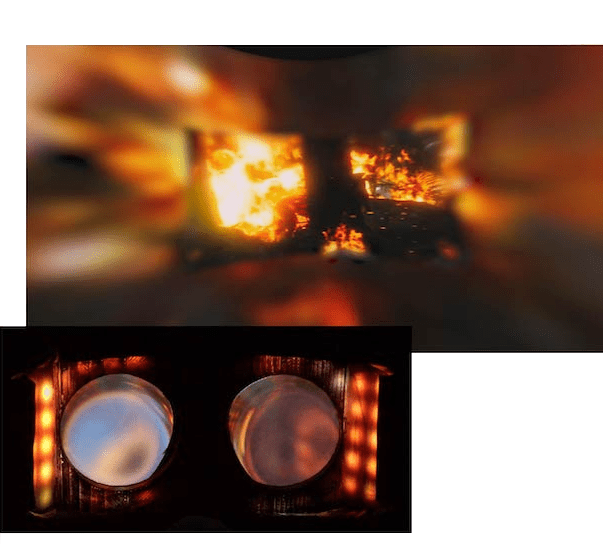
Immersion is an important factor in video experiences. Therefore, various methods and video viewing systems have been proposed. Head-mounted displays (HMDs) are home-friendly pervasive devices, which can provide an immersive video experience owing to their wide field-of-view (FoV) and separation of users from the outside environment. They are often used for viewing panoramic and stereoscopic recorded videos or virtually generated environments, but the demand for viewing standard plane videos with HMDs has increased. However, the theater mode, which restricts the FoV, is basically used for viewing plane videos. Thus, the advantages of HMDs are not fully utilized. Therefore, we explored a method for viewing plane videos by an HMD, in combination with view augmentation by LED implants to the HMD. We have constructed a system for viewing plane videos using an HMD with a deep neural network (DNN) model optimized for generating and extending images for peripheral vision and wide FoV customization. We found that enlarging the original video and extending the video with our DNN model can improve the user experience. However, our method provided more comfortable viewing by preventing motion sickness in a first-person-view video.
- Naoki Kimura, Michinari Kono, and Jun Rekimoto. 2019. Deep dive: deep-neural-network-based video extension for immersive head-mounted display experiences. In Proceedings of the 8th ACM International Symposium on Pervasive Displays (PerDis ’19). ACM, New York, NY, USA, Article 22, 7 pages. DOI: https://doi.org/10.1145/3321335.3324932 (Peer Review)
- Naoki Kimura, Michinari Kono, and Jun Rekimoto. 2018. Using deep-neural-network to extend videos for head-mounted display experiences. In Proceedings of the 24th ACM Symposium on Virtual Reality Software and Technology (VRST ’18), ACM, New York, NY, USA, Article 128, 2 pages. DOI: https://doi.org/10.1145/3281505.3283398 (Peer Review, Poster)